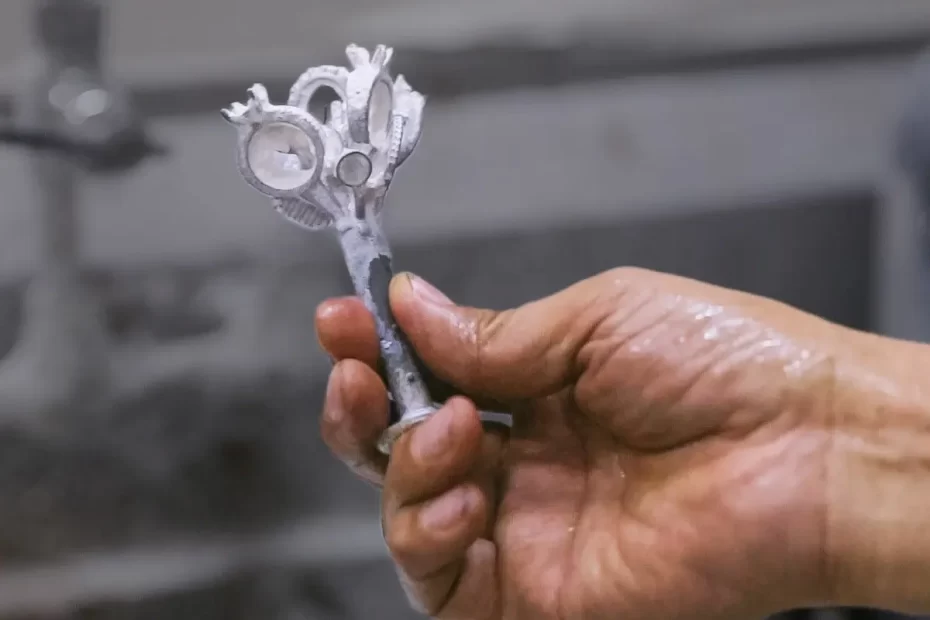Lost-wax casting is a metal casting technique for creating objects, from simple to complex, in a variety of metals (such as gold, silver, brass, or bronze) by casting an original model or pattern.
Lost-Wax Casting Process
The lost-wax casting process can differ depending on the industry and application, but it generally consists of the following steps. Cast parts can be made from a wax model itself, called the direct method, or from replicas of the original wax model, called the indirect method.
1- Metal Die Making
Based on the drawings and requirements of the desired casting parts, the metal die or mold, usually in aluminum, will be designed and produced. The cavity will form the same size and structure of desired castings, under the premise of considering the machining allowance.
2- Wax Injection
Also as known as pattern formation, lost wax casting patterns are created by injecting molten wax into the metal die produced in last process. The special wax injextion machines should be used for this process
3- Slurry Assembly
After fixing (if needed), the wax patterns are then attached to a gating system, which usually is a set of channels through which a molten metal flows to the mold cavity. After that, a structure like a tree is formed, which is suitable for mass casting at the foundry.
4- Shell Building
The investment castings outer shell casing is built up through dipping into a ceramic bath and then immediately coated with sand for several times. The process is usually repeated for many times and last for days in order to make sure the shell strong enough to withstand the molten metal later on.
5- De-waxing
The inner cavity of precision investment casting is then dewaxed, which leaves a hollow outer ceramic shell layer. The hollows are just the same space as the desired castings. During this process, the wax could be collected for re-usage.
6- Pouring & Solidification
Before pouring, the ceramic shell with cavity should be pre-heated. This prevents shock and the ceramic shell from cracking once the liquid metal at a high temperature is poured into the cavity. The chemical composition of the molten metals should also be tested before casting.
7- Sawing or Cutting
Once the molten metal has been cooled and solidified, the cast part(s) is then removed from the gating system tree cluster via shaking, cutting or friction sawing off the individual raw casting.
8- Shot Blasting and Secondary Processing
The casting part is then fully customized through grinding or additional heat treatments. Secondary machining or surface treatment might also be required depending on the requirements of the part.
9- Packing and Delivery
Then the lost wax casting parts will be fully tested for the dimensions, surface, mechanical properties and other required tests before packing and delivery.
Miracle helps you efficiently create high-quality prototypes: with a variety of materials and processes to choose from, the lightning quotation platform provides real-time cost analysis and manufacturing solution optimization, making it an ideal partner for you to customize prototypes.
